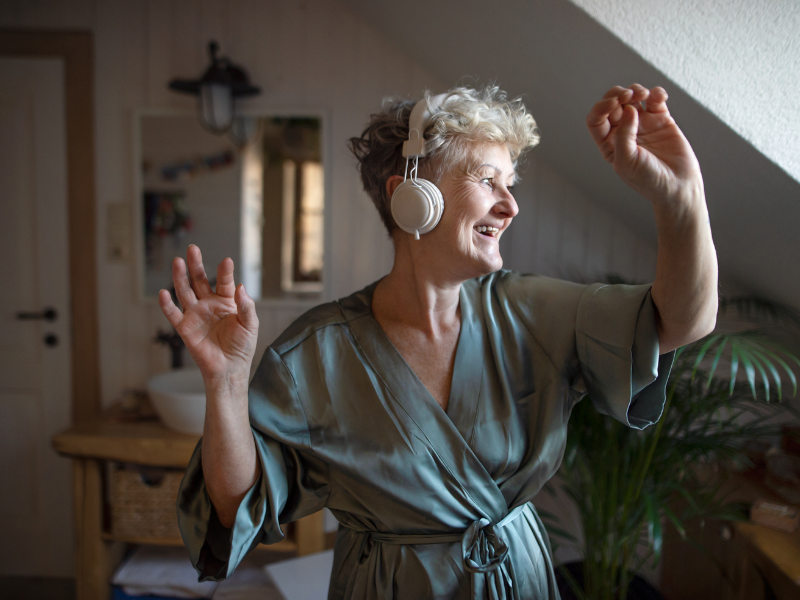Senior Living vs. Aging in Place: Pros and Cons
Senior Living vs. Aging in Place: Pros and Cons

They say home is where the heart is. That’s why many older adults express a desire to age in place. Whether they’ve lived there for a few months or for decades, home is a source of comfort. That being said, aging in place isn’t right for everyone. Some older adults may have specific health needs that could be better met at a senior living home. Ultimately, choosing where to spend your golden years requires careful consideration. Let’s take a closer look at the different options available to seniors and factors to consider.
Defining Terms and Understanding Your Options
When it comes to living options, seniors have no shortage of choices. One of the most popular options is aging in place. As the name suggests, aging in place involves living independently at home. Not only do seniors get to remain in a comfortable environment, but they also enjoy autonomy. And, if necessary, they can receive external support, such as through an in-home caregiver.
While some seniors may be interested in aging in place, others might prefer one of the following options:
- Independent living: These communities are for self-sufficient seniors with minimal health needs. They offer an engaging environment, daily activities and opportunities for socialization.
- Assisted living: In assisted living, seniors enjoy perks of independent living while also receiving health care. They maintain their own private spaces and get assistance with daily living activities.
- Memory care: Memory care homes provide specialized care for older adults with Alzheimer’s disease or dementia. This includes cognitive health care, reminiscence activities and a safe, secure environment.
- Continuing care retirement communities: Continuing care retirement communities (CCRC) meet changing health needs. Seniors can transition from independent living to assisted living services or even skilled nursing care.
With each senior living option, you’ll find a unique set of pros and cons.
Pros and Cons of Senior Living
Many senior living communities focus on enhancing quality of life through physical and mental benefits such as access to health services. At assisted living communities and CCRCs, on-site caregivers typically deliver assistance with daily living activities, medication management and nutritional services.
Senior living also offers socialization opportunities. Over 40% of older adults experience loneliness, while a quarter are socially isolated. Senior living communities foster socialization through daily activities, common areas and shared dining experiences.
Finally, senior living provides a safe, maintenance-free lifestyle. Many communities come equipped with security systems and provide housekeeping and laundry services. Not only does this give families peace of mind, but it also gives residents more free time.
It’s important to note that senior living has some downsides. For starters, it can be difficult to transition to a new environment. And senior living can get costly — on average, older adults spend about $4,500 per month on assisted living. These factors may guide some seniors toward in-home care.
Pros and Cons of Aging in Place
Like senior living, aging in place has its own benefits and downsides. The main benefit is familiarity. A home is more than a place to stay — it’s a place that houses valuable memories and belongings. Just being at home can improve emotional well-being.
Seniors who age in place also enjoy a familiar community. They can visit their favorite stores, participate in local events and remain connected to neighbors, friends and family members. Ultimately, aging in place provides both independence and social opportunities.
On the downside, it can bring safety and health concerns. As adults age, their physical capabilities may decrease, which heightens the risk of injuries and falls. Approximately one in four seniors experience a serious fall every year. Some seniors may also need extra support, such as medication or nutrition management. To assist with these issues, seniors can modify their homes with safety features or hire an in-home caregiver. However, as health needs increase, they may need to spend more time at home, which can cause social isolation.
Factors to Consider When Deciding Whether to Age in Place
Are you unsure which senior living option is best? Here are a few key things to consider:
- Health and care needs: Adequate physical and mental health support can be found through both senior living communities and in-home care solutions. If health needs are severe, however, it may be better to join a community, as full-time home care can be expensive and isolating.
- Safety and accessibility: While you can make home modifications, senior living communities tend to be safer. In addition to security systems and staff, they offer rooms equipped with safety features.
- Social engagement: Senior living communities provide daily activities to facilitate socialization. When aging in place, on the other hand, seniors have to build their own networks or rely on already established connections.
- Emotional well-being: Both senior living options and aging in place can support emotional well-being. A senior living home provides mental health support and socialization, but may lack the comfort of home. At-home care, meanwhile, brings familiarity and independence, but can be lonely.
Ultimately, you should carefully consider your physical, social and emotional needs before making a decision.
The Bottom Line
There’s no universal answer when it comes to choosing a senior living option. Rather, this extremely personal choice depends on an individual’s unique preferences, needs and goals. If you’re unsure which option is best for your needs, consider seeking advice from a health care professional or senior living expert. The more information you gather, the more likely you are to make the right choice for you.
SOURCE: The Kansas City Star
Useful links
Contact info
(301) 263-6981 ereece@cheltenhamoaks.com
9603 Allerton Terrance,
Clinton, MD
20735
9603 Allerton Terrance,
Clinton, MD 20735









